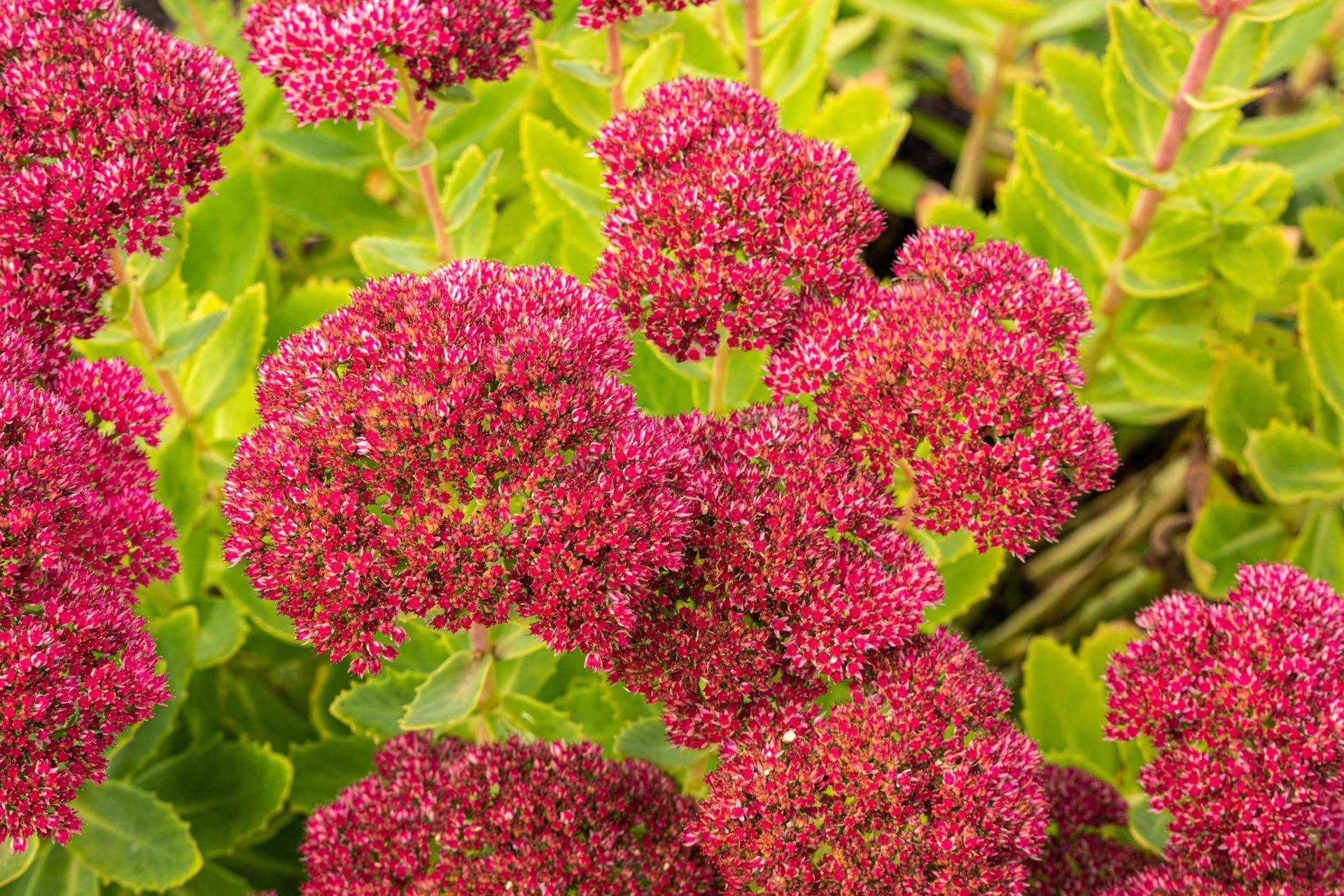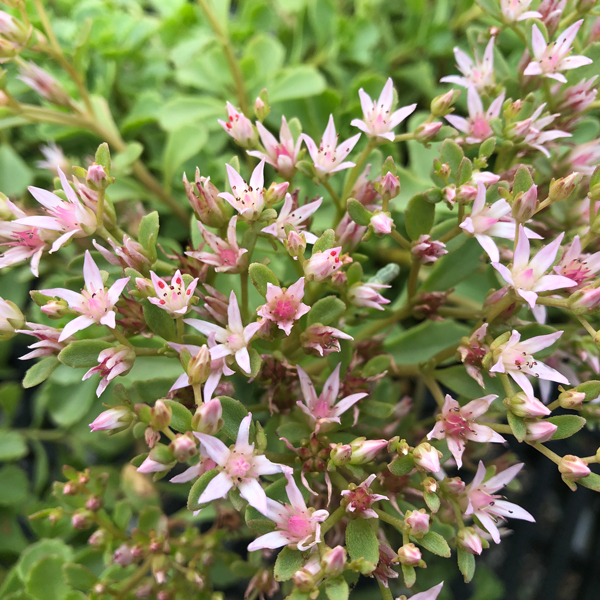Now that the glory of spring and early summer perennials is past its peak and your summer annuals are starting to look a little weary, perhaps you have noticed sedums. They are virtually everywhere you look and they are more apparent now because they are starting to come in to their own. There are good reasons that sedums are so ubiquitous – they are sun loving succulents that can withstand drought and neglect and can be grown in rocky or sandy soil, hillsides, or in containers as long as the soil drains well.

They are very low maintenance, do not require pruning and are not aggressive spreaders. In short, they are easy to grow and provide a spectacular show.

Sedums range from groundcovers to large border perennials. The groundcover or creeping sedum, also known as stonecrop, consists of low growing succulent leaves ranging from green to blue gray to reddish bronze and generally have small blooms of five-petaled flowers in yellow, white, or pink.
The leaves of some species turn shades of red and russet in winter. Creeping sedum is a great choice for rock gardens and stone walls as they thrive with poor or little soil.
The upright, border perennial sedum are generally 1-2 feet tall with green or bluish or red/purple foliage and topped by domed flowerheads consisting of many tiny flowers – almost like a broccoli plant that erupts into gorgeous colors!

Although green buds appear in the spring, their stunning beauty is not fully revealed until they begin to flower in the late summer and early fall. The flowers get richer and deeper in color as weather cools. Sedums provide interest in the garden from spring through late fall and even into the winter.
By Hilary Kassler








